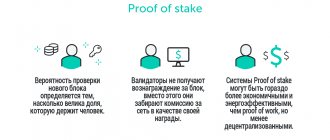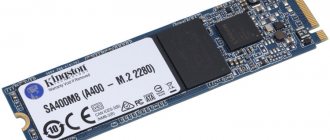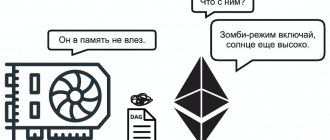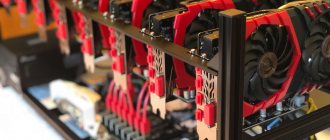Ethereum has used the Proof-of-Work (PoW) mechanism since its creation. That is, hardware is used for validation - video cards (GPU). But in 2022, the network will switch to a new consensus algorithm - Proof-of-Stake (PoS).
The consensus algorithm is the principle by which the network protects itself from transaction forgery. Participants in this process are validators.
(or miners) receive in return for providing their coins to a special server.
Ethereum mining will completely disappear after the update. How will these changes affect the price of ETH in the future? Find out in this material. Plus an assessment of prospects.
Differences between PoS and mining for investors
After the EIP-1559 update (expected in May, but released in July), part of the network commissions began to be burned. At the beginning of September 2021, Ethereum showed for the first time the day when deflation exceeded inflation - more ether was burned than it was produced.
The PoS mechanism involves staking. This means that the coins will be frozen in the contract for a certain time and removed from circulation.
These two factors create favorable conditions for investment. The new economic model promises to strengthen the value of the base currency ETH, and make it more flexible than Bitcoin with its linear reward principle.
The essence of the algorithm
So, Proof of Stake – what is it?
The PoS algorithm is an alternative to Proof of Work. The protocol appeared in 2012 and was first implemented in the PPCoin platform (better known as Peercoin). The main idea of Proof of Stake is the “share” of coins available to a node, Stake, which determines which network node will have the right to open a new block during the mining process.
In the process of mining according to the PoS principle, network nodes, as in PoW, perform some hashing operations, but the complexity of the calculations is distributed among each node in proportion to the share of virtual coins in the node’s account. That is, the more currency tokens a user holding a node has, the higher his chance of opening a new block.
Important : although the term “mining” was used above, technically it is not entirely correct. In Proof of Stake, there is no mining as such - all payments come from commissions to stakeholders. Those who confirm transactions and create blocks are called validators. In the text below, the process will be called mining for ease of understanding.
You can explain how Proof of Stake works and what it is in simple words using the following diagram. So, let's say we have a block that needs to be signed and added to the chain.
There are four validators with specific shares (40, 20, 25 and 15% of tokens):
Figure 1. Distribution of funds among validators.
Since validator 1 has the most coins, he is the one who signs the block. In addition, he receives a commission for all transactions contained in this block.
Roadmap for updates to the transition of ether to PoS
The final stages of the upgrade launch the Beacon Chain, which is similar to the Main Chain. For some time they will work in parallel and do the same work. Miners (PoW) will still mine, and validators will still test the new mechanism (PoS). Once the community is satisfied that a safe transition is possible, the Beacon Chain will be accepted as the main chain (merger). At the same time, the old Main Chain may technically remain, but over time it will no longer be used. All projects and wallets will immediately switch to the new chain.
By 2022, the first Shard Chains will be launched. These are shards - sub-chains. Many such sub-chains will provide high throughput and scalability. Ethereum plans to implement file storage and support for integrating applications written in all popular world programming languages, not just Solidity.
The transition is divided into three stages and is called Serenity. Versions 1, 2 and 3 respectively. Their successful completion will mark the successful transition of Ethereum to 2.0.
How to make money from staking
The larger the user’s share of Ether, the less profitable it is for him to cause damage to the system and put his financial resources at risk. If the user can be trusted, then he can be assigned to verify the validity of transactions. This idea formed the basis of staking.
Staking is similar in principle to a bank deposit. In both cases, the client receives income in the form of interest on the invested amount. The only difference is how these funds are used by the organization. The bank needs deposits in order to make money. Ethereum will use staking coins to conduct transactions.
Staking is passive income with interest on locked coins.
Ethereum developers have published information about the Eth 2.0 economy. It follows that the annual interest rate will vary depending on the total amount of blocked coins. At the initial stages, with 524,288 ETH staked, the yield will be 20.3% per annum. When 10,000,000 ETH is accumulated, the yield will drop to 4.6%.
The validator's annual income will also depend on the time spent online. The validator must participate in block confirmation as often as possible, otherwise the reward will decrease. Approximate profitability can be calculated using the EthereumPrice online calculator.
To become a validator you need:
- buy on the ETH exchange. The minimum threshold for participation is 32 ETH;
- register on the official website of Eth2 Launch Pad;
- download client software (software client);
- deposit from 32 ETH.
Please note that the transfer to the deposit contract is unilateral. It will be possible to return funds from Eth 2.0 back to Eth 1 no earlier than the next update phase.
Prospects for Ethereum 2.0
To launch testing and move to a new phase, the community set the mark at 524 thousand ETH. The amount of ETH in the test PoS contract is already more than 8 million. This exceeds the target by 1400% and accounts for 15% of the total emission. The willingness of users to use the new mechanism is obvious.
Since the early years of Ethereum, Vitalik Buterin has been planning to implement PoS. This is an inevitable step in the evolution of blockchain architecture. The dates have been constantly postponed, but this time there are expected dates and interested developers from all over the world. By increasing TPS (throughput) and making transactions cheaper with second-layer solutions (L2, Rollups), the network opens up new opportunities for creating larger-scale projects. After all, the road to Web3 is still being paved.
Peculiarities
In the cryptocurrency world, there are various implementations of Proof of Stake, but they are united by a common idea: a resource through which the “weight” of a node’s vote in the system is calculated—coins of a particular cryptocurrency. The more coins deposited in the account, the higher the chance of breaking a block and receiving a reward.
As is already clear, for mining you need to have a certain number of virtual coins in your account - the more, the better.
Important: in projects using the PoS algorithm, mining can only begin with the purchase of a certain number of tokens; an “empty” node with a zero balance will not be able to confirm transactions. So, to create a full DASH node, at least 1000 tokens are required.
To start mining you need:
- install cryptocurrency client software;
- top up your balance in any convenient way;
- ensure the presence of the node online.
Actually, this is where all actions end in the general case. Now the user’s chances of opening a new block depend only on the volume of the share of tokens he has.
Types of equipment: where is it used?
Several subspecies are actively functioning. If there is direct contact between the selling and buying parties, a simple POS terminal is usually installed and a corresponding agreement is concluded. It is suitable for any type of stores, chain establishments and food establishments. It is the most common and is easy to train employees. Among the disadvantages are that consumables are required - a receipt tape, and you also need a stable Internet and energy saving.
The second type is Internet acquiring. It is used when there is no direct contact between the parties. They are installed more often in areas where remote payment through an online store website predominates. To buy a product, the client enters the card details and confirms the payment by entering a code from SMS or from the back of the plastic.
The last type is mobile terminals. They were created recently and are synchronized with cell phones through applications. They are used where it is necessary to accept payment away from a retail outlet or on the road. Relevant for courier services, field repair shops or taxi organizations.
Design of an electronic terminal, scope of application of a POS terminal
When the bank is selected and the acquiring agreement is concluded, you should connect the POS terminal, install the drivers and configure the device. You can do the setup yourself; as a rule, equipment manufacturers post technical documentation with step-by-step instructions on their official websites.
To ensure data transfer to the bank, a communication channel is needed. The connection can be established via telephone, Internet or mobile cellular communication. The body of the cash register POS terminal combines:
- a keyboard, which is used to control the device and enter a PIN code;
- display;
- Printer;
- card reader;
- module providing communication with the bank;
- CPU;
- ports for integration with external devices.
- 15 reviews
Ingenico ICT250
24,648 ₽ Add to favorites
24 648₽
https://online-kassa.ru/kupit/ingenico-ict250/
OrderMore details In stock
- 3 reviews
Verifone VX520
14,990 ₽ Add to favorites
14 990₽
https://online-kassa.ru/kupit/verifone-vx520/
OrderMore details In stock
- 2 reviews
Atol 60F
25,850 ₽ Add to favorites
25 850₽
https://online-kassa.ru/kupit/atol-60f/
OrderMore details Out of production
Cash register equipment is selected based on the characteristics of the business and the flow of customers. Today, one of the most popular solutions are stationary POS terminals. Let's highlight models that meet the needs of owners of retail outlets, shops, offices, i.e., enterprises that do not provide for outbound sales.
- Ingenico ICT250 - if necessary, can work autonomously, without connecting to a PC or cash register. Supports all types of cards, including contactless ones. The terminal is multi-channel, provides two communication channels Ethernet and GPRS.
- The Pax S800 has a wide color screen; large amount of memory; presence of NFC reader. There are mini-USB, RS-232 or LAN ports. Communication options: GPRS, 3G or Wi-Fi (optional).
- Verifone VX520: significant amount of memory with the possibility of further expansion up to 500 MB. Communication channels: dial-up modem, Ethernet and GPRS. Optionally, you can install a contactless reader.
For non-travelling activities, convenience stores, trading at the market, in a tent - where the flow of customers is small, the following terminals are suitable:
- Ingenico ICT250 - contains all the necessary functionality, color display. Can work autonomously or connected to a PC. Interface with additional external devices - RS-232, USB. Communication via GPRS and Ethernet channels.
- Verifone VX520 features high performance and security.
- PAX S80 Ethernet - intuitive interface, large memory capacity (192 MB). Communication channels: Ethernet, Dial-up modem. Equipped with a contactless card reader.
For outbound trade, courier services and entrepreneurs for whom mobility is an important indicator when choosing a POS terminal, the following options are suitable: Verifone Vx680 GPRS, Atol 60F, Pax S920, Nexgo G3, Ingenico IWL220.
Large hyper- and supermarkets use POS systems in their work: POS system 10″ Atol NFD10, POS system 10″ SJ-1088.
We'll tell you which POS terminal is right for your business!
Leave a request and receive a consultation within 5 minutes.
Advantages and disadvantages
The proof-of-stake protocol has a number of significant advantages for the consumer:
- There is no need for expensive mining equipment or creating a farm. All you need is a computer with a wallet and tokens of the selected cryptocurrency on your balance.
- There is no need to think about where to place the equipment, how to ensure its uninterrupted power supply and cooling.
- Relatively low entry threshold, unlike PoW currencies, especially those whose complexity requires the purchase of ASIC miners costing hundreds of thousands of rubles.
- Environmental aspect – electricity is saved, the production of which requires irreplaceable natural resources, and the environment is polluted in the process of energy generation.
- There is no equipment “arms race” usual for Bitcoin and similar projects - the hashrate is limited by the number of coins in the wallets of stakeholders.
An important advantage of PoS is that it makes the “51%” attack more difficult. To accomplish this, the attacker must not ensure superiority in computing power, but purchase 51% of the cryptocurrency tokens, which turns out to be financially unprofitable. In addition, such an attack will disrupt the balance of the network and the stability of the cryptocurrency, that is, the attacker himself will suffer.
But there are also some disadvantages that cause concern among experts:
- a tendency towards centralization stemming from the essence of the algorithm: it encourages stakeholders to accumulate and hold funds on their balance sheets;
- a sufficiently large group of token owners, having accumulated a significant amount of coins in their accounts, can begin to dictate the rules of the network;
- theoretically possible problem of Nothing-as-Stake, or “empty stack”: an attacker can, using non-existent “virtual” resources, create a fork of the blockchain, carrying out, for example, a “double spending” attack, rejection of operations, etc.;
- low user activity. An example is Curve Finance, whose users have blocked just over 6% of their tokens from voting.











